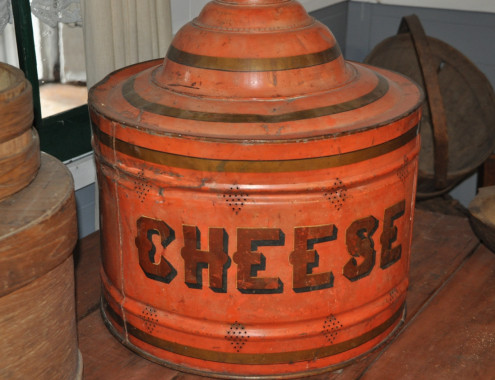Women.1.jpg

Tin cheese protector, c.1890.
Cheese making was a laborious process carried out mainly by women in the household. Milk was heated on the stove and then poured into warm pans. Rennet was added to coagulate the milk to curds and whey. When the curds reached the right consistency, the whey was drained and the curds were mixed with salt. The salted curd was then placed into a cheese press to remove the remaining whey and to create a cheese. After a day in the press the cheese was allowed to age or rest in barrels or cheese boxes in carefully controlled conditions. This ripening period lasted from a few days to several years. Women often sold their cheese in local markets or from their own homes to add to the income base for their families.
In 1865, the first Quebec cheese factory was established in Dunham, Quebec, by E. E. Hill. (Missisquoi Historical Society Collections)
Cheese making was a laborious process carried out mainly by women in the household. Milk was heated on the stove and then poured into warm pans. Rennet was added to coagulate the milk to curds and whey. When the curds reached the right consistency, the whey was drained and the curds were mixed with salt. The salted curd was then placed into a cheese press to remove the remaining whey and to create a cheese. After a day in the press the cheese was allowed to age or rest in barrels or cheese boxes in carefully controlled conditions. This ripening period lasted from a few days to several years. Women often sold their cheese in local markets or from their own homes to add to the income base for their families.
In 1865, the first Quebec cheese factory was established in Dunham, Quebec, by E. E. Hill. (Missisquoi Historical Society Collections)